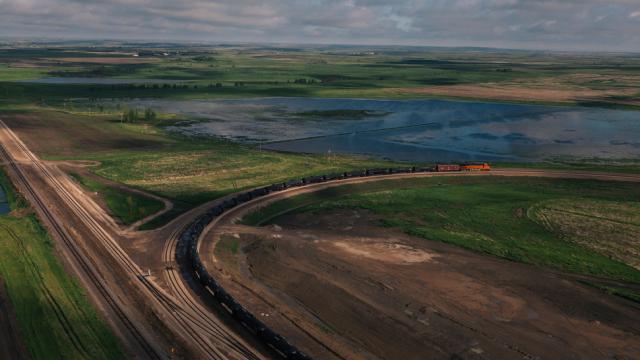Cities popping up in the middle of nowhere. Blackened landscapes of industrial runoff, including lakes of liquid hydrocarbons, like something from the moons of Saturn. Vast transportation systems snaking over previously empty hills and ranches, pulling not human passengers but tankers. This is the new geography of fracking.
Think, for example, of the brand new “city” now burning in the darkness of the Great Plains, seen in satellite images of the Dakotas.
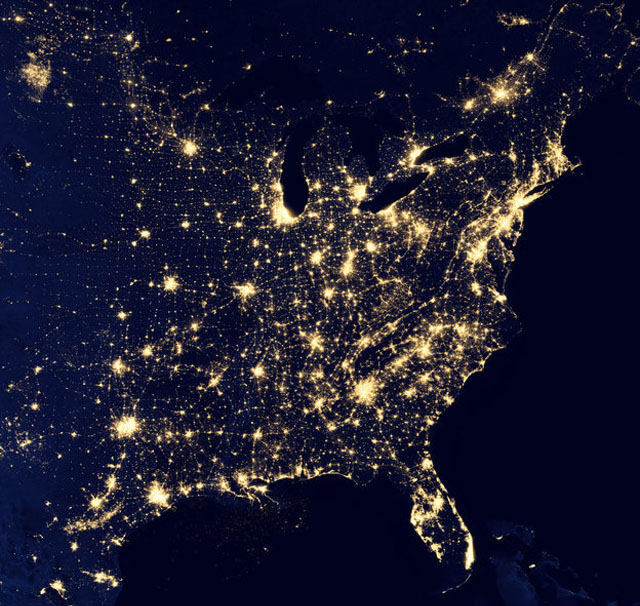
If you “run your eye up that line of lights at the center of the country, look over to the upper left,” NPR wrote last year, referring to the image, above: “There’s a patch that looks like a big city — but there is no big city in that part of North Dakota. There’s mostly grass. So what are those lights doing there? What is that?”
So, we’re told, “here is the same map again; this time, the patch is marked with a circle. It turns out, yes, that’s not a city. And those lights weren’t there six years ago.”
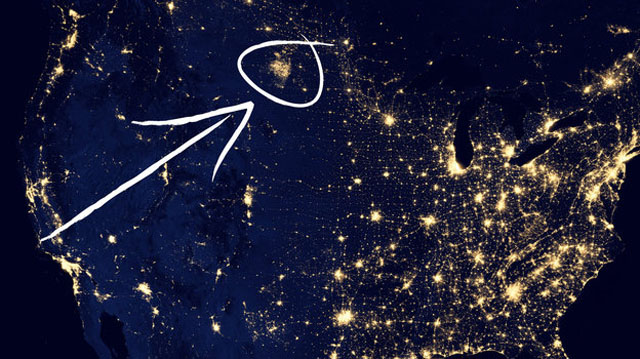
The lights — and the structures they indicate — are there as part of the immense extraction operations of fracking, breaking open the landscape from within and releasing huge hydrocarbon resources that were previously inaccessible by industrial means. Because of the regions where it occurs — in the middle of nowhere, often on farmland — fracking has resulted in whole new forms of settlement, with so-called “man camps” popping up like 21st-century Levittowns in row after row of portable trailers.
In a new book called The Boom: How Fracking Ignited the American Energy Revolution and Changed the World, energy reporter Russell Gold tells the story of how fracking, a “once-obscure oil-field technique”, has utterly transformed not only the American landscape but the entire national economy. Fracking, he writes, “requires turning whole counties into industrial zones, complete with fleets of trucks, air quality concerns, a disruption of nature, and fear that water aquifers will be poisoned.”
However, what this buys is a complete reorganization of the nation’s energy economy, and the promise of independence from imported fuels — in fact, the U.S. might very well become the world’s largest oil producer before the end of this decade.
Gold’s book is an early must-read for 2014: it is both a thorough and fascinating examination of the fracking economy and the technological innovations that have made these new riches accessible (including the often catastrophic damage done in the process of obtaining them).
He writes, for example, of early fracking attempts that, incredibly, used underground nuclear weapons in places like Colorado and Wyoming to (unsuccessfully) release subterranean hydrocarbons. Nuclear fracking was not only a failure, it was extraordinary overkill: the ultimate, successful technique still used today relies primarily on highly pressurised water — more than 200 times the pressure found in a car tyre, Gold explains — mixed with proprietary blends of undisclosed chemicals.
Oddly enough, these chemicals include liquefied guar beans — which are also used to help thicken McDonald’s milkshakes. If you ever feel like your insides have been fracked after drinking one of those frosty beverages, now you know why.
As Gold writes, “companies transform the water into a highly engineered viscous liquid designed to carry sand deep into the new fractures. As it heats up underground, the gel reverts to a watery state. This change allows the sand to drop out and remain in the fractures, holding them open like pillars in a coal mine. The water flows back out.”
These large-scale transformations are also the subject of a great, often remarkably picturesque series of images taken by photographer Tristan Spinski.
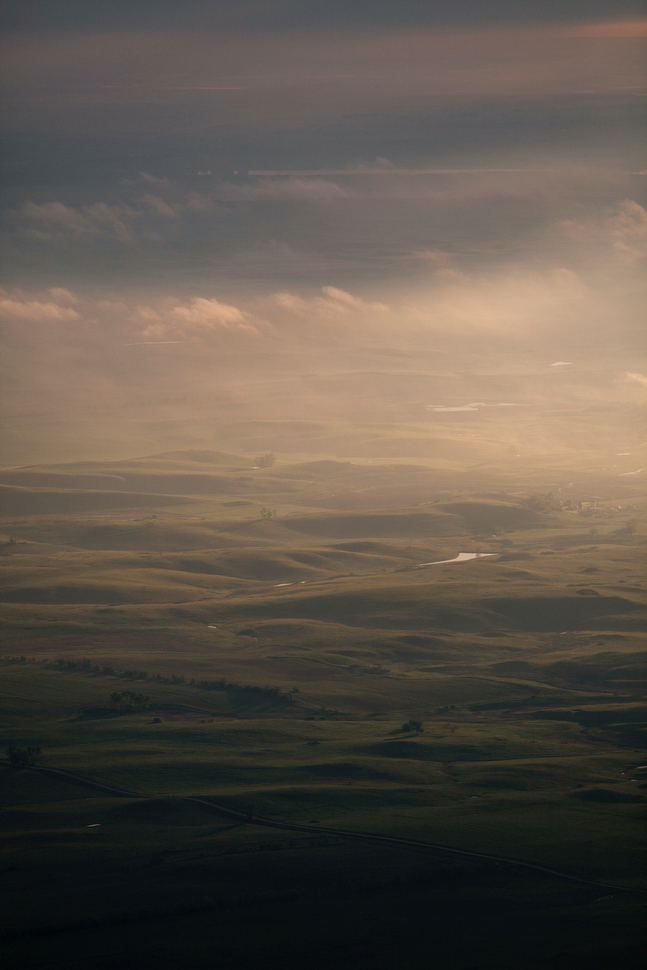
As Spinski explained to Gizmodo, the series originated as an assignment for Bloomberg Businessweek.
“My marching orders,” he told us, “were to charter a small plane out of Bismarck, North Dakota, and provide the magazine with aerial photographs of oil trains and fracking operations in the Bakken Formation — a 518,000 square kilometre region of North Dakota, Montana and Saskatchewan with an enormous subsurface oil reserve. New technologies have opened up vast swaths of this region for drilling, turning a once agrarian portion of North America into something very different.”
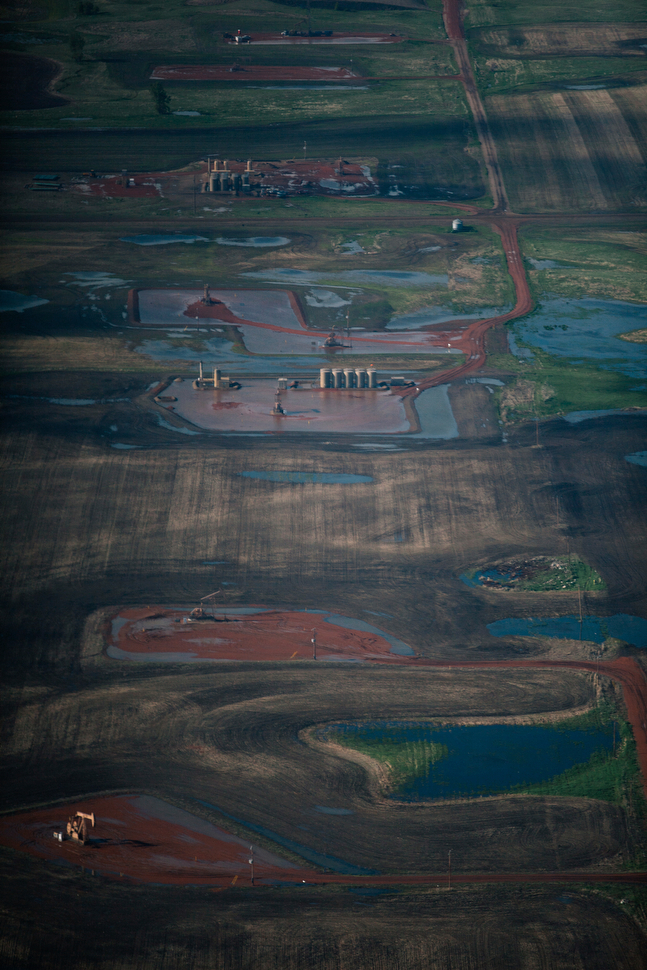
Spinski’s first priority “was to focus on the trains transporting the oil, as that was the primary focus of the story. Of course, once I witnessed the visual possibilities and impact on the landscape, and how it has forced the people to weigh the economic benefits against the environmental and socio-cultural costs of the oil boom, I expanded my efforts to include as much of the fracking operations as possible.”
It’s in this expanded cultural context that you find the so-called man camps, ersatz towns that Russell Gold describes in his book as “cobbled together in a hurry, forming “sprawling complexes of connected modular buildings [that] can hold seven hundred to one thousand workers each. Each man gets a narrow private room with enough space for a single bed, a desk, and a dresser.”
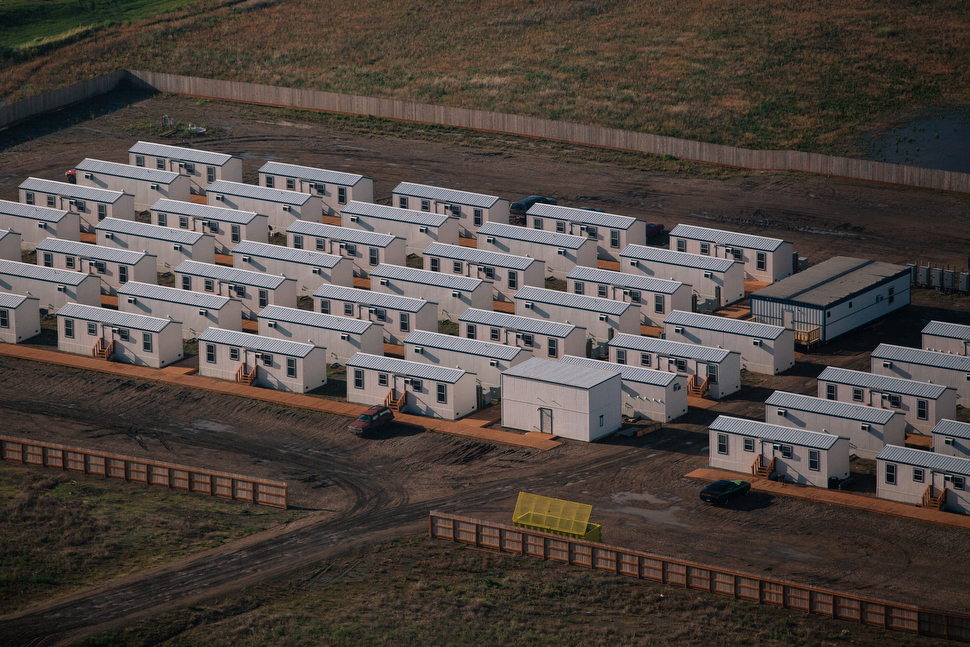
Meanwhile, outside in the landscape around them is a tangle of pure infrastructure and movement, machines framed against the terrain and disappearing into the horizon like a mirage.
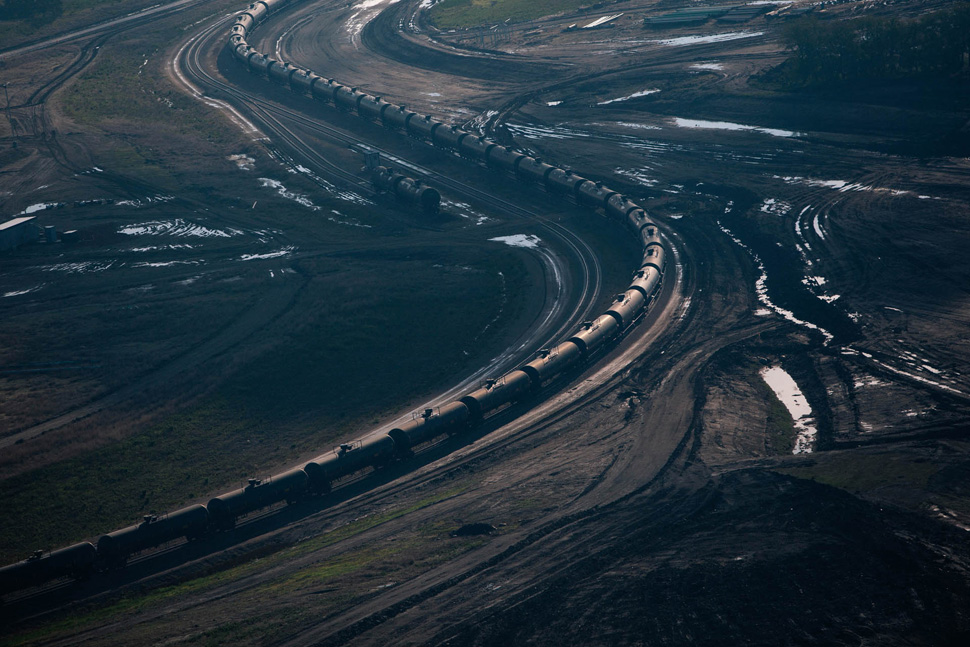
Irregular lines and rivers of runoff cut across the scenes like abstract paintings on an industrial scale, often catching sunlight and seeming to shine.
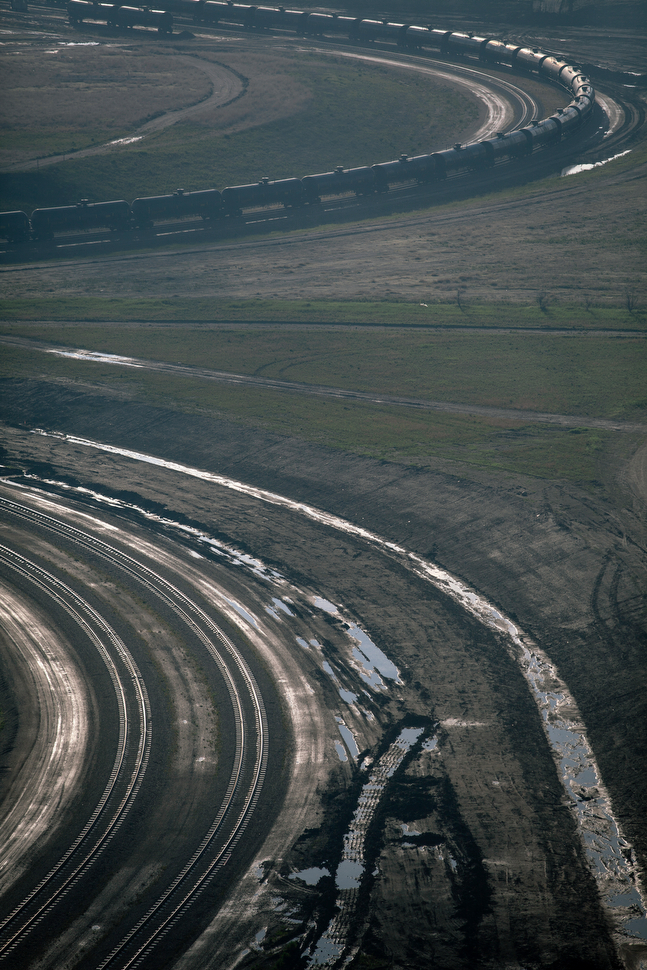
The flaring of excess gas gives the huge knots of pipes and infrastructure a triumphant, oddly Olympic feel, as the flame of fossil energy promises to burn eternally — or, at least, until the supplies run out or the environment around them is destroyed.

These flames — not the camp lights — are the reason fracking burns so brightly at night, even visible from space, so easily mistaken for a new metropolis of the Dakotas.
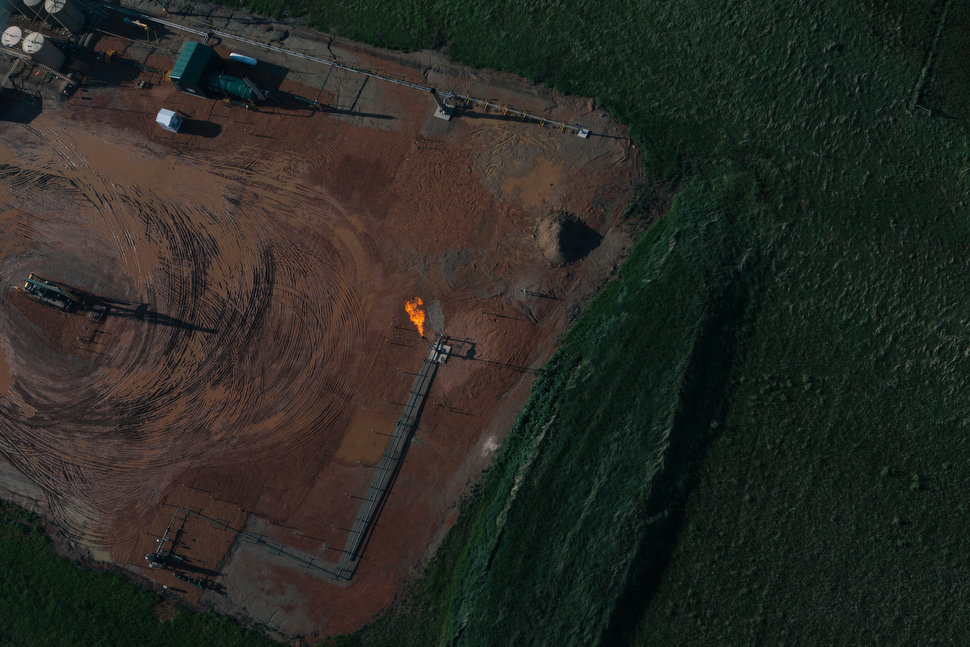
Many more photographs are available at Tristan Spinski’s site. [Tristan Spinski/GRAIN]
